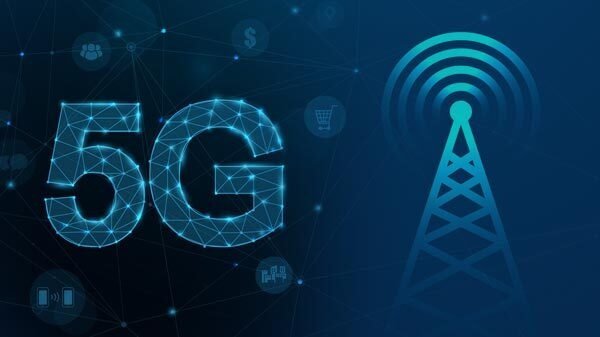In the field of telecommunication, 5G (where G stands for Generation) is the fifth generation of cellular technology. It is the latest wireless standard after 1G, 2G, 3G, and 4G. 5G will help connect almost everything virtually, viz. machines, objects, and devices. This wireless technology is expected to deliver higher GBps data speed, lower latency, higher reliability, massive network capacity, and better user experience. Better performance than its predecessors will promote new industrial applications of wireless technology.
In a 5G network, cellar networks are bifurcated into smaller areas called cells. All wireless devices in a cell will communicate with others via radio waves. It will cover a new spectrum that the 4G network needs to utilize. With the help of enhanced MIMO (multiple inputs, multiple outputs) technology used by new antennas, more data can be transferred in real-time.
The architectures will be software-defined platforms, managing network functionality via software rather than hardware. Recent advancements in virtualization, cloud-based technology, and IT and business process automation enable these architectures to be agile and flexible and provide user access anytime, anywhere. Network slices, software-defined sub-networks, can be created by 5G. These slices will enable network functionality based on the number of users and devices.
Machine learning algorithms will enhance the digital experience for users. As in the case of smart cars, the demand for response times within fractions of a second will require 5G networks to utilize automation with ML and, consequentially, deep learning and artificial intelligence (AI). The infrastructure cost can be reduced by automated provisioning and proactive traffic management. The functionality of 5G:
Network Repository Function:
The Network Repository Function (NRF) stores 5G network design functions in the operator’s network internally (NRF). It helps 5G NFs to sign up and locate each other.
Policy Control Function
The policy control Function helps make it easy to develop and implement policies in 5G. It is helpful in UDR for making for accessing the policy of subscription.
Authentication Server Function
As the name suggests, authentication is essential in verifying server authentication.
Unified Data Management
Home Subscriber Server in LTE, User Data Management was created for 5G. It includes access granting based on the user’s roles, authentications, and these credentials by transferring to other networks.
User plane functionality
It includes packet routing, quality of service handling, packet forwarding, and inspection of packets. And acts as a mediator in intra- & inter-RAT mobility.
Summary:
5G aims to provide the needs of 5Gbps, including smartphones and IoT gadgets. It will help connect almost everything virtually, viz., machines, objects, and devices. It will cover a new spectrum unutilized by the 4G network. 5G aims to provide the needs of 5Gbps, including smartphones and IoT gadgets.
It includes access granting based on the user’s roles, authentications, and these credentials by transferring to other networks. And acts as a mediator in intra- & inter-RAT mobility.
Also, Read About:-
Empowering Your Business With Cutting-Edge Web Design Solutions
Exhaust Valves: What They Do and How They Work
Navigating the Complexities of iPad Mini 5 Motherboard Repair
Pixwox – Download Instagram Stories, Video and Images Secretly.
Maximize Team Collaboration with Contact Mumble’s Innovative Features


